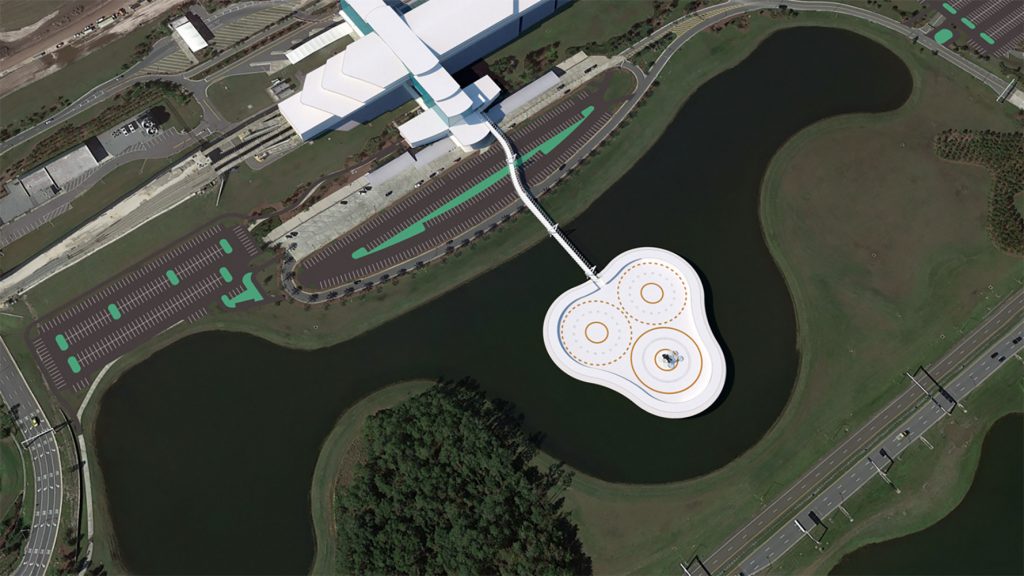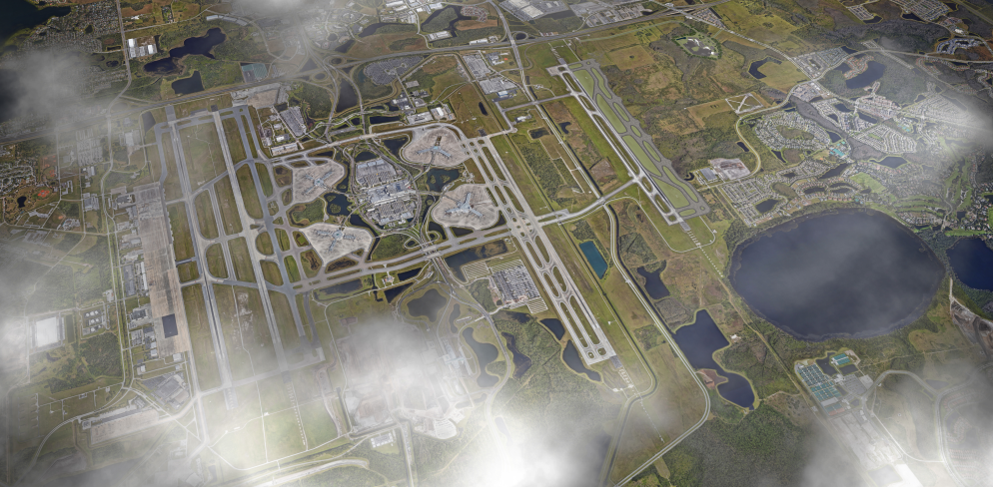
The Greater Orlando Aviation Authority (GOAA) aims to serve as a technology incubator and premier on-airport research-and-development (R&D) for advanced air mobility (AAM) technologies, and ultimately integrate operations into the multimodal environment at Orlando International Airport (MCO).
Technological advancements, including the electrification of propulsion systems, improved battery life, and development of systems to enable the automation of flights, will shape the future of aviation and enable the emergence of electric vertical takeoff and landing (eVTOL) aircraft. These aircraft require a small footprint for takeoff and landing, similar to helicopter operations, and ultimately will foster “air taxi” operations, enable intercity and intracity travel, allow emergency and public services in areas that are not served or are currently underserved, and, more broadly, contribute to the evolution of the transportation system by enabling the transfer of passengers and goods by air within a 250-mile range from a takeoff/landing pad.
According to industry experts, the integration of AAM into today’s National Airspace System (NAS) has the potential to reduce carbon emissions, reduce noise impacts, create new jobs, provide air service to underserved communities, and create opportunities for new and diversified revenue streams for airports. However, to safely and securely integrate AAM into the NAS, real-world, as opposed to simulated, flight test demonstrations are required that involve aircraft manufacturers, infrastructure developers, and third-party airspace management service providers.
To meet the industry needs, the Greater Orlando Aviation Authority is proposing to:

Test the readiness of eVTOL aircraft and UAS, including the integration of these operations with existing and future communications and navigational systems

Advance the testing of new and advanced aviation technologies

Collect data on aircraft performance and passenger experience that will ultimately contribute to a safe and efficient AAM and UAM ecosystem

Test routes, procedures, and communication protocols under various use cases to understand how passenger transport and cargo delivery would operate under varying weather and air traffic conditions
Identify air traffic control policy and procedures to support the anticipated high-volume scale-up in operations by EVTOL and other autonomous aircraft

Increase public awareness and confidence in the safety of these new types of operations

Foster economic development within the region

Promote further collaboration among aviation, aerospace, alternative mobility, simulation, and advanced materials and manufacturing industries within the region and in the state of Florida

Continue working with the City of Orlando, Orange County, surrounding cities and counties, and the state of Florida to determine the policies and regulations to enable these operations
Vision A: Multimodal Hub

Vision B: Aerospace Center of Excellence



